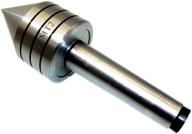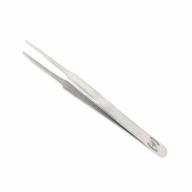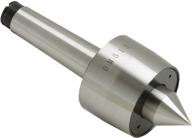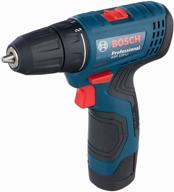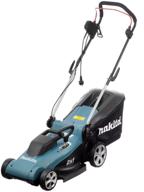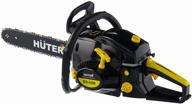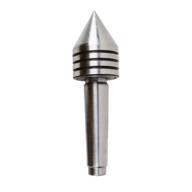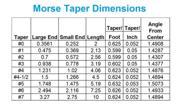Introduction to Live Centers and Their Benefits
A live center is an important workholding accessory for metalworking lathes. Live centers offer significant advantages over standard dead centers. This article provides an introduction to live centers, how they work, and their key benefits.
What is a Live Center?
A live center consists of a tapered shaft that fits into the lathe spindle. The business end contains bearings that allow the center to rotate along with the workpiece. This contrasts with a dead center which remains stationary.
How Live Centers Work
The key components of a live center include:
- Outer sleeve: Fits into the lathe spindle and holds the center in place.
- Bearings: Allow low-friction rotation of the center shaft and tip.
- Shaft: Transmits rotational forces from the bearings to the tip.
- Center tip: The replaceable contact point that supports the workpiece.
As the workpiece rotates in the lathe, the tip of the live center turns along with it. The rolling contact between the tip and workpiece reduces friction compared to a dead center.
Benefits of Live Centers
Live centers offer several key advantages:
- Lower friction: Rolling contact reduces heat, vibration, and chatter.
- Better precision: Less runout results in improved workpiece accuracy.
- Supports long workpieces: Allows through-turning of longer workpieces.
- Versatility: Interchangeable tips suit different applications.
- Safety: Rotating center minimizes the risk of workpiece slipping.
The precision and versatility of live centers make them indispensable for metal turning applications where high workpiece accuracy is required.
| Live Center Type | Description |
|---|---|
| Standard | Fixed 60 or 90 degree center tip. General purpose use. |
| Revolving | Interchangeable center tips. Ideal for multiple applications. |
| Extended nose | Long nose for reaching into bores. Good for gear and spline turning. |
| Self-ejecting | Spring-loaded tip. Ejects workpiece when released. |
This overview covers the essentials of what live centers are, how they function, and their significant benefits for metalworking. There are various styles of live center suited to different turning operations. Considering a live center's advantages can improve workholding, precision, and productivity for machining applications.
Top products in 🛠️ Live Centers Tools
Types of Live Centers and How They Work
There are several common types of live centers designed for different metalworking applications. Understanding the various live center configurations and how they function allows proper selection for the workpiece and operation.
Standard Live Centers
The standard live center has a fixed 60 or 90 degree center tip. This is the most common style and used for general lathe turning operations.
- The tapered shaft fits into the lathe spindle.
- Angular contact ball bearings allow smooth rotation under load.
- Hardened center tips support the workpiece on the live center end.
Revolving Live Centers
Revolving live centers use interchangeable tips that screw into the center body. This allows changing the tip shape to suit different turning applications.
- Quick change tips like flat, concave, convex, and extended nose.
- Allows one live center to perform multiple functions.
- Tips screw into the center shaft and lock in place.
Extended Nose Live Centers
Extended nose live centers have a long shaft that allows reaching deep inside bores to support the workpiece.
- Nose lengths up to 300 mm for internal turning.
- Useful for machining gears and splines.
- Requires a bearing support at the outer end.
Self Ejecting Live Centers
Self-ejecting live centers use a spring mechanism to pop the workpiece off the center tip.
- A collar slides along the center shaft to compress the spring.
- When released the spring extends and ejects the workpiece.
- Quickly unloads completed workpieces.
Understanding the operating principles of different live center types allows selecting the optimal design for the lathe turning task. Proper live center selection enhances rigidity, reduces vibration, and improves finish quality.
Key Features to Look for When Selecting a Live Center
There are several important features and specifications to consider when choosing the right live center for an application. Evaluating these metrics will ensure the live center provides the required performance and precision.
Shaft and Bearings
The shaft and bearings are critical components affecting the center's runout and rigidity.
- Shaft diameter - Larger is better for minimal deflection.
- Bearing type - Angular contact or precision ball bearings preferred.
- Preloaded bearings - Improves stiffness and handling of axial loads.
Runout
Runout is a measure of the tip eccentricity as the live center rotates.
- Total Indicated Runout (TIR) should be minimized.
- Look for TIR specs of 0.0001" or 0.0025mm or better.
- A low runout live center will produce less workpiece variation.
Interchangeable Tips
For flexibility, look for live centers with replaceable tips.
- Allows changing tip profiles without buying new centers.
- Should accept a range of tip materials to suit different needs.
Materials
- Body: Cast iron or steel for rigidity.
- Shaft: Hardened steel resists wear and deformation.
- Tip: Carbide, ceramic, or tool steel based on workpiece hardness.
Length
- Standard live centers are around 100 mm (4") long.
- Extended nose lengths up to 300 mm are available.
- Choose length based on application.
Taking the time to evaluate critical live center specifications will ensure the best performing model is selected for the lathe turning operation and workpiece requirements.
Top Live Center Brands on the Market
When investing in a live center for a metalworking lathe, choosing a quality brand from a reputable manufacturer is important. There are several leading companies that make exceptional live centers suited to machining applications.
PSI Woodworking
PSI Woodworking produces high precision live centers ideal for metal and wood turning. Some of their top models include:
- HCXC Barracuda Chuck and Live Center System - Innovative quick change live center with just 0.0006" runout.
- HCSC7 Titan 7-Piece Live Center Set - Complete set with multiple tip styles and shaft lengths.
- HCXC-NR Self Ejecting Revolving Live Center - Convenient spring-loaded live center for quick workpiece removal.
Fuerda
Fuerda makes exceptional quality precision machine tool accessories including live centers. Notable models are:
- No. 5 Interchangeable Head Live Center - Revolving live center with 5 quick change tips.
- No. 7 Heavy Duty Live Center - Rugged cast iron body with preloaded ball bearings.
- No. 12 Extended Live Center - 300 mm nose for deep internal turning.
1851
1851 produces a wide selection of high accuracy live centers in Taiwan. Their products include:
- Precision Interchangeable Live Centers - Revolving centers with various carbide tips.
- Hardened Live Centers - Durable one-piece steel live centers.
- Extended Reach Live Centers - For turning deep bores and hollow parts.
Craftsman
Craftsman makes solid performing live centers for the hobbyist machinist market. Good choices are:
- 3 Piece Live Center Set - Interchangeable center with flat, concave, and convex tips.
- Precision Live Center - Pre-loaded bearings with minimal runout.
- 4 Piece Self-Ejecting Live Center Set - Spring loaded live centers for quick workpiece removal.
Investing in a live center from these top brands will provide the quality and accuracy needed for flawless workholding in lathe machining applications.
What Are Live Centers Tools And How Do They Work?
Live centers tools are a type of tool bit that is placed between the headstock and tailstock of a machine tool. They are used to support long workpieces and reduce "flex", which can cause inaccuracies in machining. Live centers tools revolve with the workpiece, providing support and reducing friction. They are typically used in lathes and other machine tools. Live centers tools can be either "live" or "dead". Live centers have bearings and a point that rotates, while dead centers are solid pieces of steel that do not move. Live centers tools can hold ball bearings inside that allow the center to prevent wearing to its ends. They allow more force and higher turning speeds without causing damage to the workpiece. Live centers tools can be loaded into a tool changer, enabling the user to gain the increased stability it provides longer workpieces while still maintaining the ability to change tools.






